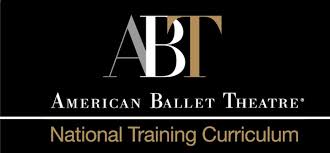4 Things Parents Show Know In Choosing A Dance School
“Four Things Parents Should Know In Choosing A Dance School” is a free publication of the Claire School of Dance. Click here to download the full brochure. Below you will find an abridged version.
For many parents, the world of dance is a mysterious place. Choosing a dance school, then, can be a uncertain process. BUT the four questions listed below can help parents find a qualified and competent dance teacher.
QUESTION ONE: What does the studio look like?
The most important aspect of a dance studio is the floor. NEVER dance on a concrete surface. Dance floors should be “floating,” a layer of air under the dance surface. The best studio floors have a vinyl covering called “marley.” Other aspects of the dance room to consider are light, ventilation, and space for everyone to move safely.
QUESTION TWO: Who is the teacher?
Dance classes should be taught by a highly trained, empathetic adult. The teacher should have years of training, a high degree of expertise, and both enthusiasm and patience.
QUESTION THREE: What is the teacher teaching?
Classes for preschool age children should focus on fundamentals of movement such as space, time, rhythm, and direction. They should NOT be at the barre or doing more than the simplest of ballet exercises. Beginning ballet students, ages 8 and up, will first learn alignment, holding parts of the body in proper relationship to one another. Turnout should be taught with regard to safety. More advanced students will learn more complicated steps and rhythms. It is important that proper alignment and physical strength are adequately developed before more advanced material is added to the students’ curriculum. Parents and teachers who rush training may compromise a child’s physical safety and any future career in dance.
QUESTION FOUR: How many students are in the class?
The ratio of students to the physical size of the classroom should permit full movement for each student. Class size, especially for beginning ballet students, should permit individual correction. Bad habits can be hard to break and can limit future progress. Finally, the age range of students should be linked to developmental stages. Generally speaking, the younger the child the smaller the age range should be. A three year old is different developmentally from a five year old.
By asking these and other questions, parents can distinguish between the good and the not-so-good schools. They can make a more informed choice.


My daughter is wanting to do some dance classes. Now I think it would be a good idea to find one who has been doing dance for a long time and has the proper training. That way, my daughter should get the best experience and be able to recreate what she learns on the dance floor.
Thanks for explaining that students with proper alignment and strength will acquire more advanced steps. My daughter took ballet as a toddler, and now she is 17 and wants to return back to ballet. I will be sure to remember the questions you’ve provided when finding her a dancing teacher.